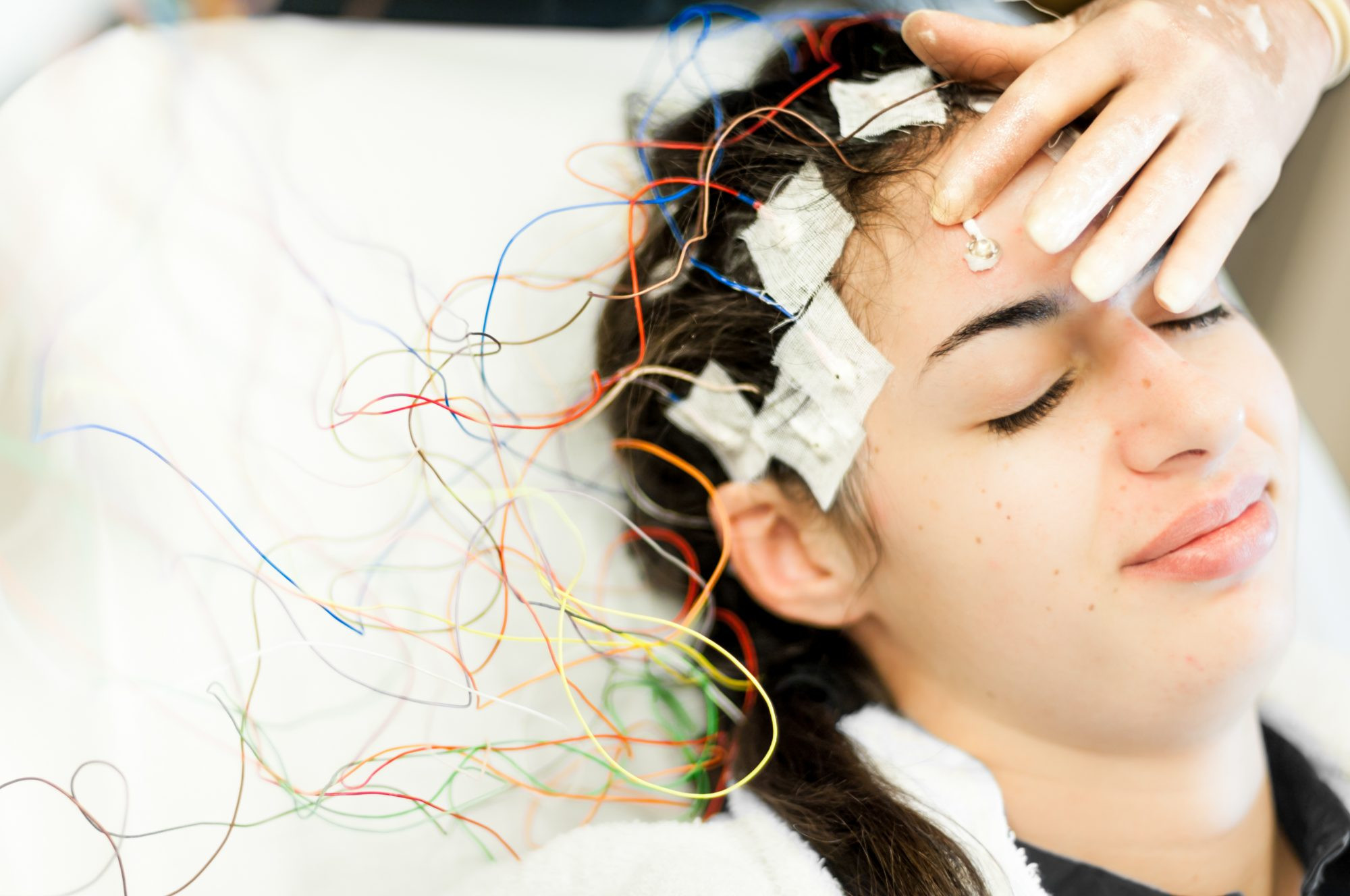Definition
Epilepsy is a central nervous system (neurological) disorder characterized by abnormal brain activity, causing seizures or periods of unusual behavior, sensations, and sometimes loss of consciousness. Anyone can experience epilepsy. It can affect males and females of various races, backgrounds, and ages.
According to a WHO report, there are 50 million people worldwide with epilepsy. Approximately 4-10 per 1000 people have active epilepsy and require treatment. This figure is higher in regions with middle and low per capita income. About 2.4 million people are diagnosed with epilepsy each year. The Epilepsy Study Group of the Indonesian Neurologists Association (Pokdi Epilepsi PERDOSSI) in 2013 in Indonesia's five largest islands concluded there were 2,228 people with epilepsy, and 21.3% of them were new patients.
Causes
The cause of epilepsy is an imbalance in brain nerve transmission. The mechanism causing this imbalance is not precisely known, but several factors are suspected as causes:
- Genetic Influence: Epileptics generally have a family history of epilepsy. However, certain genes make someone more sensitive to environmental conditions that trigger epilepsy.
- Head Trauma: Previous head trauma can be a cause of epilepsy.
- Developmental Disorders: Epilepsy is often associated with developmental disorders, such as autism.
- Brain Abnormalities: Arteriovenous malformations (AVMs) or blood vessel malformations can cause epilepsy.
- Prenatal Trauma: Before birth, babies are more sensitive to brain damage, so abnormalities during pregnancy, such as infections, poor nutrition, and oxygen deficiency, can cause the baby to develop epilepsy.
Risk factor
Several risk factors can increase the risk of epilepsy, including:
- Age: Epilepsy occurs more often in children and the elderly but can occur at any age.
- Family History: A family history of epilepsy can increase the risk of developing epilepsy.
- Head Trauma: Using seat belts while driving and wearing helmets when riding motorcycles can reduce the risk of head trauma and epilepsy.
- Stroke: A history of stroke can cause brain abnormalities that lead to epilepsy later.
- Brain Infections: A history of brain infections such as meningitis can increase the risk of epilepsy.
- Febrile Seizures in Childhood: Febrile seizures (seizures caused by fever) can occur in children under 5 years old. Children who have had febrile seizures have a higher risk of developing epilepsy later.
Symptoms
Epilepsy is caused by abnormal brain activity, so seizures are the main symptom that can appear. Seizures may be accompanied by:
- Temporary confusion
- Lip smacking
- Muscle stiffness
- Staring spells
- Uncontrollable movements of arms and legs
- Loss of consciousness (not responding when called, unaware)
- Psychological symptoms, such as fear, anxiety, déjà vu
The symptoms experienced are influenced by the type of seizure. However, generally, epileptics have the same type of seizure every time. Thus, the symptoms experienced will be the same in each episode. Doctors will classify seizure types into focal or generalized based on how epilepsy symptoms begin.
Focal seizures
Focal seizures are manifestations of electrical disturbances in the brain that occur on only one side of the brain. These seizures can be divided into two categories:
- Simple Focal Seizures: This category does not cause loss of consciousness. It can cause changes in emotions, smell, sound, déjà vu, jerking movements of one limb, tingling, and numbness. Some people experience sensations like tingling, dizziness, and seeing lights.
- Complex Focal Seizures: This category involves symptoms on one side of the brain followed by loss of consciousness. These seizures make the person appear to be in a dream-like state, staring blankly while performing repetitive actions like hand rubbing, swallowing, walking in circles, or lip smacking.
Symptoms of focal seizures are often mistaken for other neurological disorders like migraines, narcolepsy, and mental illnesses.
Generalized seizures
Generalized seizures involve electrical disturbances in the entire brain (both hemispheres), leading to loss of consciousness (not responding when called). There are six types of generalized seizures:
- Absence Seizures: Typically occurring in children, these seizures involve staring spells for 5-10 seconds and can happen multiple times a day.
- Tonic Seizures: These cause muscle stiffness and affect the back, arms, and legs, potentially leading to falls.
- Atonic Seizures: Sudden loss of muscle control causes the body to go limp, often resulting in falls.
- Clonic Seizures: These involve repetitive jerking movements, usually affecting the neck, arms, and legs.
- Myoclonic Seizures: Rapid, brief jerking movements in the upper body, arms, and legs.
- Tonic-Clonic Seizures: Previously known as grand mal seizures, they involve full-body stiffness, shaking, eyes rolling back, and loss of consciousness. These seizures can result in loss of bladder control and tongue biting.
Diagnosis
Your doctor will ask about when the first seizure occurred, the type of seizure (focal or generalized), consciousness after the seizure, seizure frequency, and any underlying conditions. To diagnose epilepsy, your doctor will conduct a neurological examination and blood tests to exclude other causes. Additional tests include:
- Electroencephalogram (EEG): Records brain activity to detect epilepsy. Electrodes are placed on the head to record electrical activity. Changes in brain activity patterns can indicate epilepsy, even without a current seizure.
- CT Scan or MRI: Performed if a brain abnormality such as a tumor, infection, or bleeding is suspected.
- Lumbar Puncture: Conducted if an infection is suspected.
- Cognitive Function Tests: Assess cognitive abilities, memory, and speech to help determine the brain's affected area.
If no abnormalities are found in these tests, the diagnosis will likely be epilepsy.
Management
The goal of epilepsy treatment is to prevent recurrent seizures. Treatment continues until two years of seizure-free episodes are achieved. Most epileptics do not experience seizures after regular medication use. Various antiepileptic drugs are available; consult your doctor about the appropriate medication.
Some drugs have side effects such as fatigue, dizziness, weight gain, skin rash, coordination issues, memory, and cognitive problems. Severe side effects include depression, suicidal thoughts, allergies, and internal organ inflammation. Record and report all side effects to your doctor.
To control seizures and prevent recurrence, follow these steps:
- Take medications as prescribed.
- Always consult your doctor before changing medications.
- Do not stop medications without consulting your doctor.
Other treatments, depending on indications, include epilepsy surgery, vagus nerve stimulation, and a ketogenic diet. Some children with epilepsy can reduce seizures with a high-fat, low-carbohydrate ketogenic diet. After some time on the diet, children may stop it. Monitoring the child’s condition is crucial to prevent malnutrition. Side effects of the ketogenic diet include dehydration, constipation, slowed growth due to nutrient deficiencies, and kidney stones.
Several epilepsy treatments are being developed for future use.
Complications
Seizures can occur anywhere and anytime, potentially causing:
- Falls
- Drowning, if a seizure occurs while swimming
- Car accidents
- Pregnancy complications
- Emotional health issues
Other, less common complications include:
- Status Epilepticus: Seizures lasting more than five minutes or two seizures without a return to consciousness. This can cause permanent brain damage and death.
- Sudden Unexpected Death in Epilepsy (SUDEP): Occurs primarily in patients with tonic-clonic seizures and/or those unresponsive to treatment. About 1% of epileptics die from SUDEP.
Prevention
Epileptic seizures can be prevented by:
- Identifying and avoiding your epilepsy triggers, such as stress, certain substances, and emotional extremes.
- Maintaining a regular sleep schedule.
- Learning stress management and relaxation techniques.
- Avoiding alcohol and drugs.
- Taking prescribed medications.
- Avoiding bright lights and other visual stimuli.
- Reducing computer screen exposure.
- Eating a balanced diet.
When to see a doctor?
Seek medical attention immediately if:
- Seizures or seizures last more than five minutes.
- Consciousness or breathing does not return to normal after a seizure stops.
- Another seizure occurs quickly after the first.
- Seizures are accompanied by a fever or occur during pregnancy.
- There is a history of self-harm during seizures.
- Seizures persist despite taking antiepileptic medication.
- Experiencing a seizure for the first time.
Looking for more information about other neurological diseases? Let's look at the information Click here!
- dr Ayu Munawaroh, MKK
Kurniawan M, Suharjanti I, Pinzon RT. (2016). Panduan Praktik Klinis Neurologi. Perhimpunan Dokter Spesialis Saraf Indonesia.
Aninditha T, Wiratman W. (2017). Buku Ajar Neurologi. Departemen Neurologi Fakultas Kedokteran Universitas Indonesia.
MayoClinic. (2021). Epilepsy. MayoClinic. Retrieved from: https://www.mayoclinic.org/diseases-conditions/epilepsy/symptoms-causes/syc-20350093
NHS UK. (2021). Epilepsy: Overview. NHS UK. Retrieved from: https://www.nhs.uk/conditions/epilepsy/
WHO. (2019). Epilepsy. WHO. Retrieved from: https://www.who.int/news-room/fact-sheets/detail/epilepsy












